#arilus cristatus
Note
What's your favourite bug?

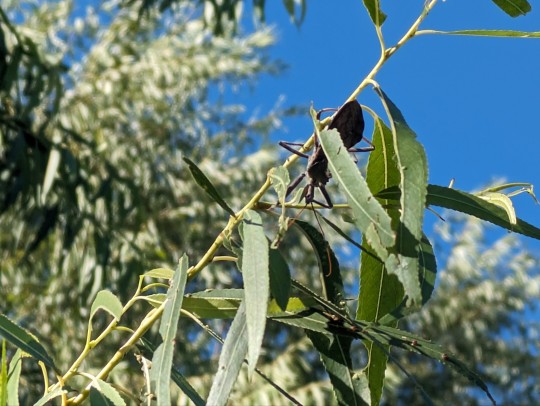
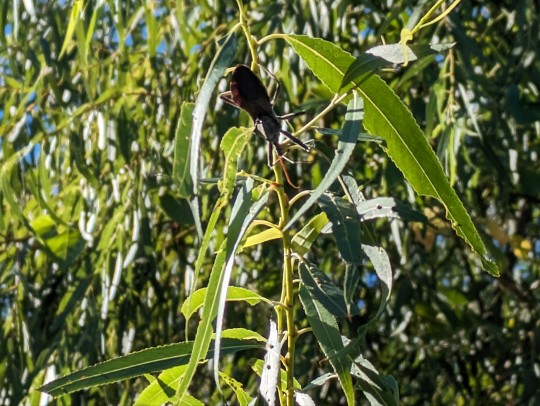
Arilus Cristatus! The north american wheel bug. Very bitey friends!
Photos by me!
7 notes
·
View notes
Text

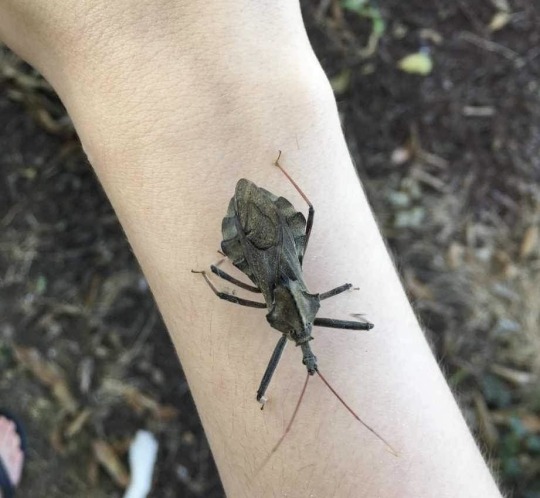
beeg wheelbug girl
2 notes
·
View notes
Text
It's starting to warm up again after a brief chilly spell, which means I can see a few more critters before the snow falls! I found a giant wheel bug at a gas station (which my mom affectionately calls wheelie bugs) and a seed bug on our garage!
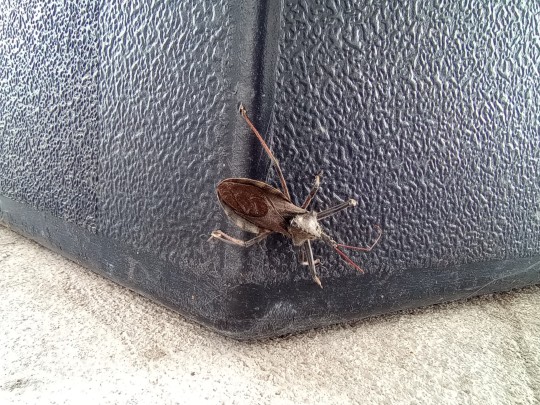

[Image description 1: a brown North American wheel bug (Arilus cristatus) is standing on the side of a dark gray trash bin. End ID.]
[Image description 2: a mottled brown and red western conifer seed bug (Leptoglossus occidentalis) is walking on a white paneled building. End ID.]
#tj taulks#wildlife#insects#assassin bugs#true bugs#north american wheel bug#western conifer seed bug#arilus cristatus#leptoglossus occidentalis#i should've uploaded these photos separately so the tags didn't get all cluttered but oh well
0 notes
Text

0 notes
Note

Strange looking fellow on the side of a crosswalk button
please specify if you want ID!
a wheel bug, Arilus cristatus
521 notes
·
View notes
Text
Making Better State Insects
So at some point I stumbled across a list of State Insects. Honestly I wasn't even aware states had "state insects", but as I looked down the list my disappointment grew. A vast majority of states had selected the European honeybee (which is not even native) as their state insect, with monarch butterflies and ladybugs being the two runner ups. I thought this was a damn shame because there's so many interesting insects in the US, so I'm making a better official new list of state insects.
For this list my criteria are:
Insect must be native to the state
No repeats
Insect must be easily observable to the naked eye
I also had general guidelines of picking insects that were relatively common (based on inaturalist heat maps of observation) and picking insects that were cool or interesting. Some of these insects I picked because I thought they were important parts of the areas culture and experience (lovebugs, toebiters, and periodical cicadas) and some insects I picked just to raise awareness that they exist in the US.
I also don't think I gave anyone huge L's, no mosquitoes, louses, cockroaches, ect, because my goal of this list is to get people interested in their native insects and I want it to be fun to find and observe your state insect.
Also some states get gold stars for picking state insects that already meet these criteria and are cool so they get to keep theirs. Some states also have "state butterflies" or "state agricultural insect" which for this list I'm ignoring, you can keep those I'm just focused on state insects. Slight disclaimer also, I've only ever lived in California, Nevada, Oregon, Washington, and South Carolina, and all these states are keeping their original state insect. So all the insects I'm choosing are for states I haven't lived in. Also I'm not including photos in this post just for my own sanity.
List under the cut!
Alabama
Old: Monarch Butterfly
New: Giant Leaf-footed Bug (Acanthocephala declivis)
Leaf-footed bugs are cute, they're big, they're stanced up, the males have big back legs, you've probably seen them. Being true bugs they have piercing mouthparts and suck plant juices.
Alaska
Four-spot Skimmer (Libellula quadrimaculata)
Alaska gets to keep their old state insect, it's a cool dragonfly and apparently was partially chosen to honor bush pilots who fly to deliver supplies in the Alaskan wilderness, so really cool!
Arizona
Two-tailed swallowtail butterfly (Papilio multicaudata)
Arizona also gets to keep their state insect. Kind of a shame because Arizona has a lot of cool species, but it did meet my requirements and they get points for choosing a different kind of butterfly.
Arkansas
Old: European honeybee
New: North American Wheel Bug (Arilus cristatus)
One of the largest assassin bugs in the US, these guys are appreciated by gardeners for their environmentally friendly pest control. They also look badass.
California
California Dogface Butterfly (Zerene eurydice)
Endemic to California and on a stamp! Again, kind of a shame because there's a lot of cool insects in California, but I respect this choice, especially since California was the first state to designate a state insect (1929).
Colorado
Colorado Hairstreak Butterfly (Hypaurotis crysalus)
Same deal as California, the state's name is in the common name, unique butterfly found in the four corners region. Just get a stamp or something soon!
Connecticut
Old: European Praying Mantis
New: Cecropia Moth (Hyalophora cecropia)
You picked a state insect no one else had but went with a nonnative mantis? Here's an insect that'll make you stand out and it's a native species. Lesser known than some of the other giant silk moths, the Cecropia moth is the largest native moth and has some truly stunning colors.
Delaware
Old: Convergent Ladybeetle
New: Periodical Cicada (Magicicada septendecim)
Cicada's had to be somewhere on this list and Delaware was one of the main hotspots for brood X, one of the largest broods of the multiple staggered brood cycles. Hey, they have a lot of history in America. Accounts go back as early as 1733, with Thomas Jefferson and Benjamin Franklin making a note of them.
District of Columbia
Old: None
New: Monarch Butterfly (Danaus plexippus)
The Entomological Society of America is trying to get the Monarch Butterfly added as our national insect, so I think that's reason enough to let DOC claim it.
Florida
Zebra Butterfly (Heliconius charithonia)
Florida gets to keep their state butterfly, but the populations that have existed in Florida are in steep decline. Ideally I would want being the official state insect to come with some protections, hopefully people can get invested in reintroducing them.
Georgia
Old: European Honeybee
New: Horned Passalus Beetle (Odontotaenius disjunctus)
Also called bess beetles or patent-leather beetles, these cute guys are important for forest systems because they eat decaying wood, helping to break down felled trees. They're cute beetles that squeak when disturbed.
Hawaii
Kamehameha Butterfly (Vanessa tameamea)
An endemic Hawaiian butterfly named after a ruling dynasty of Hawaii. Their population is under threat, as with a lot of native Hawaiian species, so I think this is a good state insect to build protections and activism around.
Idaho
Old: Monarch Butterfly
New: Ice Crawler (Grylloblatta sp. "Polaris Peak")
Look Idaho, I have to admit that even though I've traveled extensively through WA, OR, CA, and NV I've never stepped foot in Idaho and I don't intend to. Your state exists in a weird liminal zone, not really the pacific northwest but not really whatever Montana is either. Your state isn't even all in one time zone. So look, I really wanted ice crawlers to be on this list, but they're exclusively found on mountains in the pacific northwest and Sierra Nevadas. Normally I would've given them to Washington or Oregon, but those states already have state insects that work for them. So your state gets ice crawlers, and they do exist in Idaho in the panhandle. It's not an L, ice crawlers are amazing extremophiles that crawl over snow in high elevation mountain peaks. They exist in their own unique order and theres only one genus in the US, with different species being region locked, sometimes onto specific mountains. Their thermoregulation is so delicate, the warmth of someones hand holding them causes them to over heat and die. They're cool, unique, and weird, and let's face it so is your state. At least I didn't take a cop out by picking the potato bug.
Illinois
Old: Monarch Butterfly
New: Red-banded Leafhopper (Graphocephala coccinea)
Leafhopper done Chicago style.
Indiana
Old: Say's Firefly
New: Common True Katydid (Pterophylla camellifolia)
I wanted to give you Say's Firefly. I really did. But when I looked on Inaturalist not A SINGLE OBSERVATION was listed for the species in Indiana. I'm even going to post pictures.
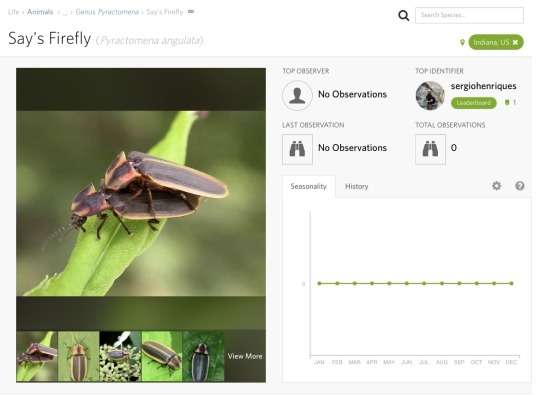
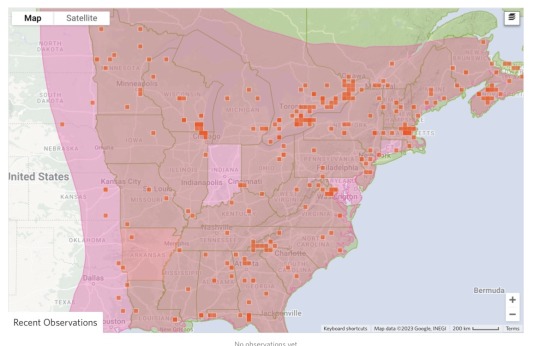
So even though this is extremely funny I'm giving your state the Common True Katydid instead. Large, loud, and easy to spot, these guys can frequently be heard chirping in trees. Not only do different populations have different rates of chirp, but the rate of chirp is also so predictably dependent on temperature that you could make an equation to tell the temperature based on chirp rate.
Iowa
Old: None
New: Westfall's Snaketail (Ophiogomphus westfalli)
Really cool clubtail dragonfly that's almost exclusively found in Iowa, Missouri, and Arkansas.
Kansas
Old: European Honeybee
New: Rainbow Scarab (Phanaeus vindex)
A kind of true dung beetle, they play an important role in removing waste. And although they don't roll waste like the stereotypical dung beetles, they are extremely pretty.
Kentucky
Viceroy Butterfly (Limenitis archippus)
This is fine.
Louisiana
Old: European Honeybee
New: Lovebug (Plecia nearartica)
Look, one of the southern states was going to get this one and Louisiana has a majority of the observations for them. Although annoying, it's things like having to scrape thousands of flies off your car that makes the Southern experience. Embrace it!
Maine
Old: European Honeybee
New: Brown Wasp Mantidfly (Climaciella brunnea)
I really wanted these guys to be somewhere on the list. Neither a wasp, mantis, or fly, these are predatory neuropterans related to lacewings. They have raptorial front legs (resembling a mantis) and their coloration resembles paper wasps that they live alongside. Weird, unique, and wonderful!
Maryland
Baltimore Checkerspot Butterfly (Euphydryas phaeton)
This butterfly might've been picked for the resemblance of the state flag. It's in decline in it's native range, so hopefully more awareness and consideration to state insects will help push conservation efforts.
Massachusetts
Old: Ladybug
New: Hornet Clearwing Moth (Paranthrene simulans)
Hornet mimic moth, the caterpillars feed on chestnuts and oaks. All lepidopterans (moths and butterflies) have modified hairs on their wings that form the "scales" that give this order their name. For this moth though, parts of it's wings don't have any scales so it more convincingly resembles a hornet. Underneath the scales, butterfly and moth wings look pretty much like any other insect's wing. Cool!
Michigan
Old: None
New: American Salmonfly (Pteronarcys dorsata)
The biggest salmonfly in North America. They make excellent fishing bait, and several fly fisherman use salmonfly lures to catch trout. Their nymphs are also an important indicator of water quality, with them being one of the first species to disappear in the presence of pollution or contaminants.
Minnesota
Old: Monarch Butterfly
New: American Giant Water Bug (Lethocerus americanus)
Also one of the ones that had to be on the list somewhere, and the Inat heatmap says Minnesota. Toebiters are part of the experience, and they are cool and ferocious looking.
Mississippi
Old: European Honeybee
New: Eastern Eyed Click Beetle (Alaus oculatus)
Click beetles have a cool adaption that allows them to launch themselves in the air to avoid predators. This makes an audible sound, hence their common name. The Eastern Eyed Click Beetle is one of the largest and most striking click beetles in the US, with large false eyespots on their thorax.
Missouri
Old: European Honeybee
New: Goldenrod Soldier Beetle (Chauliognathus pensylvanicus)
A soldier beetle that feeds on aphids and small plant pests, these beetles also eat pollen and nectar from flowers. They don't harm the flower, and though their common name reflects their preference for goldenrod flowers, they're also an important pollinator of the prairie onion (Allium stellatum). This is a native species of onion that grows from Minnesota to Arkansas.
Montana
Old: Mourning Cloak
New: Western Sheep Moth (Hemileuca eglanterina)
Mourning Cloak butterflies do technically work for my criteria, but I wanted to showcase some more regional insects in this as well, as Mourning Cloaks are found throughout North America and Eurasia. The Western Sheep Moth is an absolutely stunning giant silk moth, found throughout the western United States. Although not as big as some other silk moths, the bold orange and black coloration on these make them absolutely stand out.
Nebraska
Old: European Honeybee
New: Blowout Tiger Beetle (Cicindela lengi)
A tiger beetle with unique patterns, these guys are active predators and are particularly difficult to spot because they run extremely quickly. They seem to be pretty cold tolerant and exist from Colorado up into Canada.
Nevada
Vivid Dancer Damselfly (Argia Vivida)
This damselfly was picked as Nevada's state insect because it's widespread throughout the state and matches the state colors, silver and blue. That gets my seal of approval!
New Hampshire
Two-spotted Lady Beetle (Adalia bipunctata)
This is fine.
New Jersey
Old: European Honeybee
New: Margined Calligrapher (Toxomerus marginatus)
A pretty hoverfly, they strongly resemble bees in both looks and behavior. Larvae feed on common plant pests such as thrips and aphids, while the adults sip nectar and pollinate flowers. These helpful attributes make it something the Garden State can appreciate!
New Mexico
Tarantula Hawk (Pepsis grossa)
New Mexico wins the official state insect list by a landslide. Not only is the tarantula hawk a super cool and formidable insect to showcase, but New Mexico's state butterfly (Sandia Hairstreak) was discovered in New Mexico. No notes 10/10!
New York
Nine-spotted Lady Beetle (Coccinella novemnotata)
A native species of lady beetle that's been in decline in recent years, New York is one of the last remaining states where they've been spotted. I also appreciate that New York designated a specific ladybug species instead of just saying "Coccinellidae species".
North Carolina
Old: European Honeybee
New: Eastern Rhinoceros Beetle (Xyloryctes jamaicensis)
A large native species of rhinoceros beetle. They breed in ash trees, and are under threat due to competition from the Emerald Ash Borer.
North Dakota
Old: None
New: Nuttall's Blister Beetle (Lytta nuttalli)
As with all blister beetles, these guys have a chemical defense. Unlike the more famous Bombardier Beetle thought, instead of being black and red they are iridescent red/purple and green.
Ohio
Old: Ladybug
New: Bald-faced Hornet (Dolichovespula maculata)
Look, when the one thing everyone knows about your state is that it sucks, it's time to lean into it. Bald-faced hornets, everyone knows them, everyone has opinions about them, and they get a lot of attention. I don't think I have to explain this one anymore.
Oklahoma
Old: European Honeybee
New: Giant Walking Stick (Megaphasma denticrus)
The largest insect in the United States. Being a native walking stick, they're less damaging than the imported invasive walking sticks that are heavily controlled.
Oregon
Oregon Swallowtail Butterfly (Papilio oregonius)
Oregon in the common name and in the species name, and also has a stamp!
Pennsylvania
Pennsylvania Firefly (Photuris pensylvanica)
Pennsylvania in the common name and species name. If fireflies weren't already on this list I would've made sure to include them somewhere.
Rhode Island
American Burying Beetle (Nicrophorus americanus)
When I saw this on the list I was worried. American Burying Beetles are one of my favorite insects, but they're extremely endangered now. I also thought they existed more in the midwest, so I was worried I would have to change this one because it violated the "native to the region" rule. But! To my pleasant surprise, not only did their historic range extend to Rhode Island, but there is actually a carefully maintained wild population on Block Island. They estimate between 750-1000 individuals live there, making it one of the few remaining places where the American Burying Beetle still exists. Excellent work Rhode Island!
South Carolina
Carolina Mantis (Stagmomantis carolina)
This is fine. I wanted to give South Carolina the Palmetto bug but they're actually not native.
South Dakota
Old: European Honeybee
New: Golden Northern Bumble Bee (Bombus fervidus)
"Save the bees" should really be focused on native pollinators, many of whom are in decline. There are a lot of species of native bee you can feature as a state insect, with the Golden Northern Bumble Bee being a particularly large and striking species.
Tennessee
Old: Firefly and ladybug
New: Black-waved Flannel Moth (Megalopyge crispata)
Seriously look them up, these guys are adorable.
Texas
Old: Monarch Butterfly
New: Rainbow Grasshopper (Dactylotum bicolor)
It was really hard to pick an insect for your state. The Texas Unicorn Mantis was a contender but I eliminated it because it's really only found in the southern part of Texas, so it was between the Rainbow Grasshopper and the Eastern Velvet Ant (or Cow Killer). I went with the Rainbow Grasshopper because it's more wide spread and common, and occurs everywhere except the east part of Texas. But the Eastern Velvet Ant only occurs on the east part of Texas, maybe you should get an East and West Texas insect? I also thought more people have probably already heard of the Eastern Velvet Ant than the Rainbow Grasshopper, which is a shame because they're super interesting to look at.
Utah
Old: European Honeybee
New: Mormon Cricket (Anabrus simplex)
Mormon Crickets are not true crickets, and instead closer related to katydids. Their common name comes from an early account of Latter-day Saint settlers in Utah. In 1848, a swarm of Mormon Crickets decimated the settler's crops, so the legend goes that they prayed for relief from this plague of insects. Later that year, a swarm of gulls appeared and ate the crickets, thus saving the crops. This is recounted in the "miracle of the gulls" story. To recognize their contributions, the California Gull is commemorated as Utah's state bird. I thought it was fitting then that the Mormon Cricket be recognized as your state insect.
Vermont
Old: European Honeybee
New: Long-tailed Giant Ichneumon Wasp (Megarhyssa macrurus)
A pretty wasp with an extremely long ovipositor, these wasps are common in deciduous forests across the eastern United States. They can't sting, and instead use their long ovipositor to stab into tree bark and deposit eggs on the horntail larvae that burrow into the trees.
Virginia
Old: Eastern Tiger Swallowtail Butterfly
New: Giant Stag Beetle (Lucanus elaphus)
A large stag beetle native to the Eastern United States. Although not as well known as their similar looking fellow stag beetles from Japan, these guys are a lovely chocolate brown instead of solid black. Like most stag beetles, they breed in decaying wood.
Washington
Green Darner Dragonfly (Anax junius)
I imagine this was chosen because it matches the flag.
West Virginia
Old: European Honeybee
New: Appalachian Tiger Beetle (Cicindela ancocisconensis)
This tiger beetle likes hilly terrain. As with all tiger beetles, they can be hard to spot because they run across the ground in search of prey. They are fast! But this can make it more rewarding when you finally catch up to one.
Wisconsin
Old: European Honeybee
New: Phantom Crane Fly (Bittacomorpha clavipes)
Don't believe old wive's tales about crane flies drinking gallons of blood, they are nonbiting. Those striking black and white legs are hollow, and are held out when they fly, making an extremely distinct sight that's been likened to sparklers or snowflakes.
Wyoming
Sheridan's Hairstreak (Callophrys sheridanii)
This is fine.
#insect#insects#state insect#long post#list#text post#entomology#bugblr#invertebrates#invertiblr#inverts#invert
195 notes
·
View notes
Text



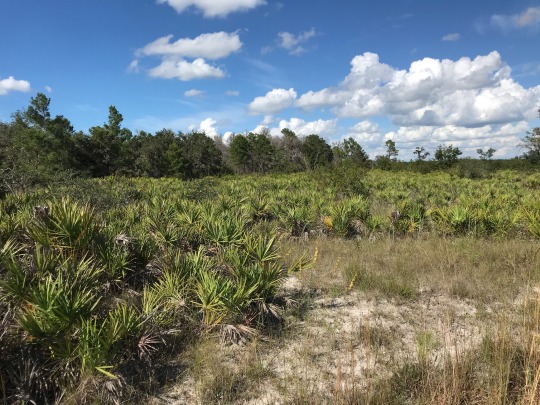

Regal jumping spiders (Phidippus regius) are one of the world’s largest jumping spiders. Endemic to the southeast US, mostly Florida, where they can be quite common among low vegetation in open, sunny habitats and prefer to make their silk lairs on palmetto fronds.
They’re probably also the best-known species of jumper, mostly in the context of being kept as pets. They often charm even individuals who are otherwise arachnophobes, though I think their undeniable cuteness can make people overlook the fact that they’re incredibly formidable predators even by spider standards, able to use their excellent vision and reflexes to stalk and subdue large, dangerous prey. Awhile back I saw one eating another venomous predator, a wheel bug (Arilus cristatus) that was at least twice the size of the jumper.
474 notes
·
View notes
Text

JuneBug: Celestial Wheel Bug - Solar Variant (Arilus cristatus)
65 notes
·
View notes
Text

@lostinthelegs submitted: Zuko, my Psyttala horrida nymph a few hours after a molt.

A gorgeous adult Reduvius personatus I collected recently.
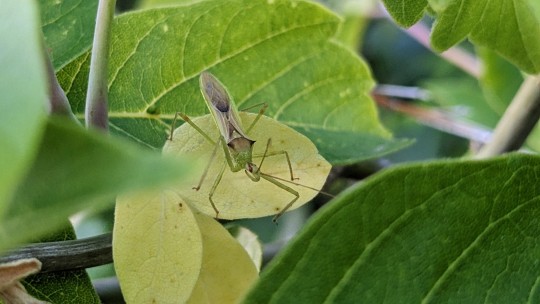


A few adult Zelus luridus spotted locally.
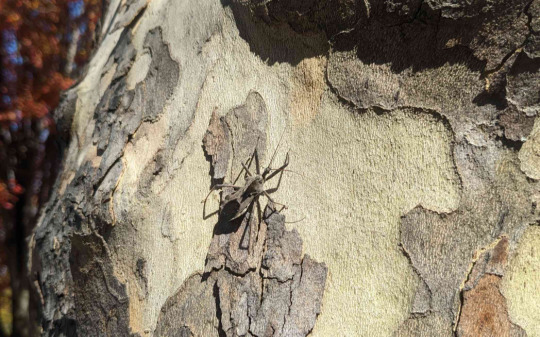
And, my absolute favorite, a male adult Arilus cristatus I collected while passing through Virginia.
What's your favorite assassin bug?
What an excellent collection of assassin bugs! Wheel bugs are definitely in my top five just because I love their shape. Not sure I could choose a favorite but I'm a big fan of ambush bugs and kissing bugs, despite the latter being vectors for disease. Also thread-legged bugs in Emesinae!
#animals#insects#bugs#submission#true bugs#assassin bug#wheel bug#horrid king assassin bug#Zelus#pale green assassin bug#masked hunter
52 notes
·
View notes
Text

septembug prompt 6 - "liquify"
north american wheelbug, Arilus cristatus
21 notes
·
View notes
Text

not a wasp, but still a painfully venomous insect, so i figured this belonged here.
do not attempt, this was an accidental handling (was moving him with a stick, he climbed from the stick to my hand before I could react), these insects can inflict a very painful bite. regardless of that, wheel bugs are highly beneficial insects as they kill and eat many pests that other insects will not touch, such as japanese beetles, so please leave them be if you happen across one.
Wheel bug, Arilus cristatus
63 notes
·
View notes
Text
November 2nd, 2023

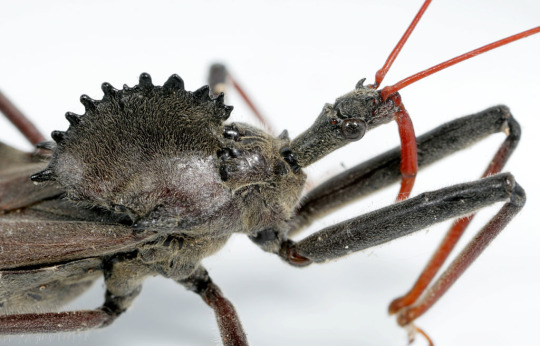
North American Wheel Bug (Arilus cristatus)
Distribution: Common in eastern Canada and the eastern United States, but with a range extending to Mexico and Guatemala.
Habitat: Mainly found in leafy areas where prey is abundant; popular habitats include sunflower, goldenrod, cotton, locust tree trunks and fruit and tree groves.
Diet: Active predators; feed mainly on caterpillars and beetles, such as japanese beetles, cabbage worms, orange dogs, tent caterpillars and Mexican bean beetles.
Description: A shy predator, the north American wheel bug spends the majority of the day hiding, but emerges at night to hunt its prey. Once it catches its prey, it holds it in place with its enlarged front legs and pierces it with its beak, injecting salivary fluids that turns its prey's insides into a sippable liquid. Because it tends to prey on common garden pests, the north American wheel bug is considered a beneficial insect to have around your garden.
When threatened, this insect may release a foul smell from the two scent glands on its abdomen. Though it's not typically aggressive, it may also bite; its bite is reputed to be extremely painful and long-lasting, though the wheel bug isn's considered particularly venomous. Its main mechanism of defense, however, is camouflage—due to its heavy armor, it's very slow and is unable to escape predators very fast.
(Images by Mike Merchant and Patrick Coin)
4 notes
·
View notes
Text
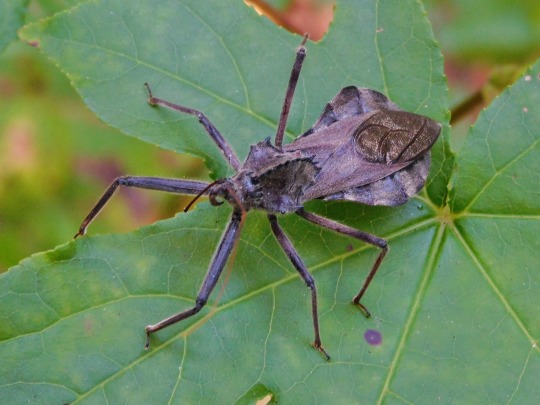

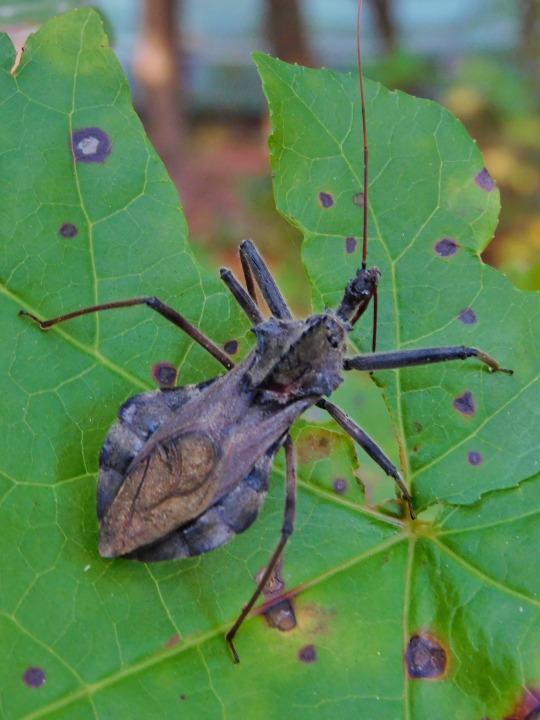
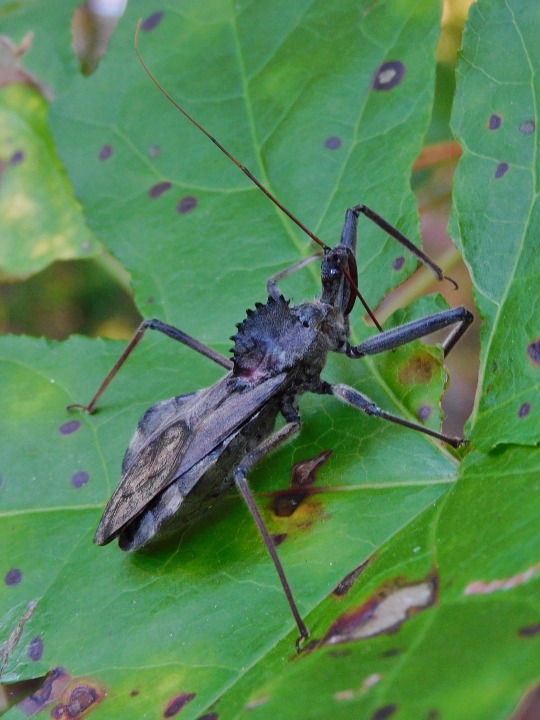
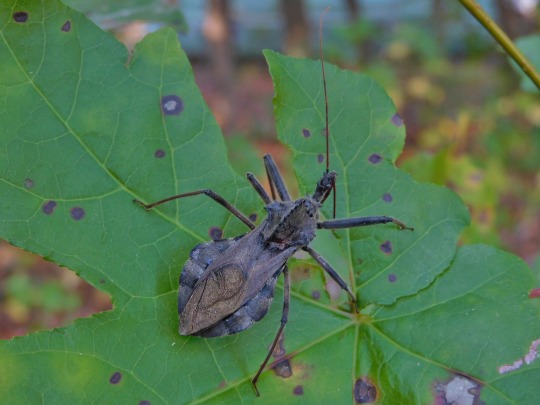



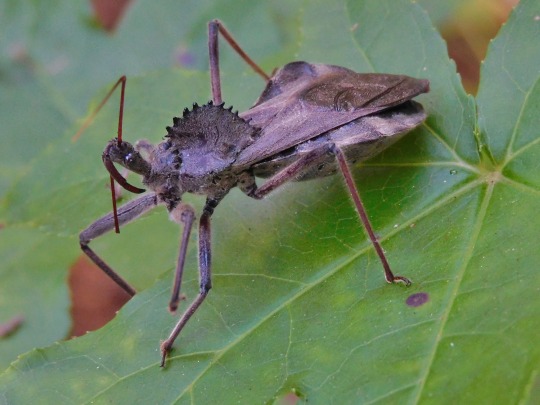
This Morning's extra special guest sta... a big, beautiful North American Wheel Bug (Arilus cristatus), the main body was a good 1.25 inches.... (I always try to leave things well alone, and they say the bite of these is worse than any bee sting...)
4 notes
·
View notes
Text
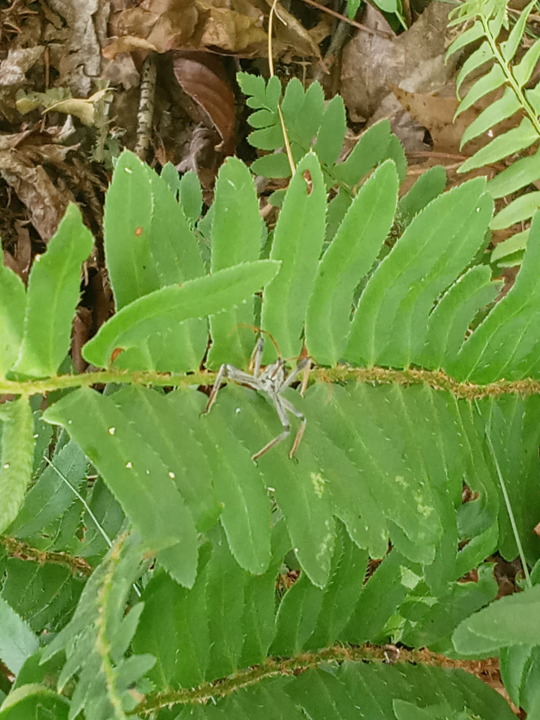
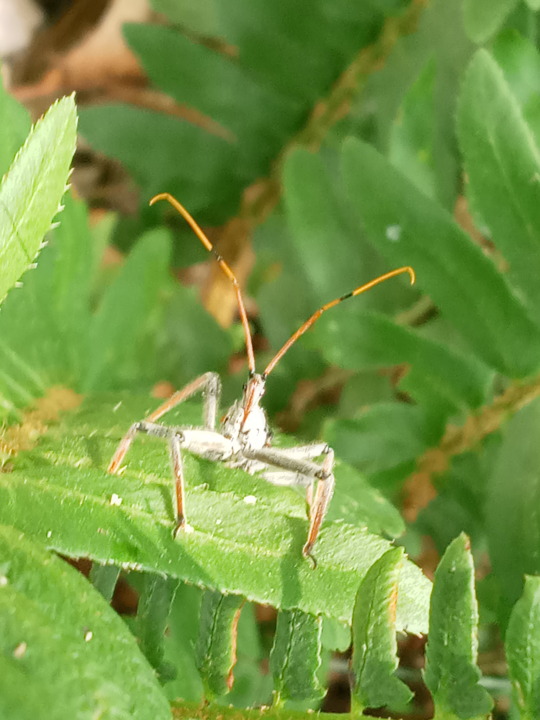

A wheel bug (Arilus cristatus) nymph! Tried getting more angles but this lad kept turning to stare at me! Seems the observer has been observed!
#Kinda looks like it's made of pipe cleaners ngl#reduviidae#Wheel bug#Assassin bug#Assassin bugs#True bugs#Hemiptera#bugs#Bug#Insects#Insect#Entomology#Arthropods#Photos#Photo#Wasp House Sights
16 notes
·
View notes
Note
i apologize if this isnt a good question, but how do you tell the diff. between assassin bugs and leaf footed bugs? i have a photo of a bug, and seek/inat said just.. general leaf footed bugs, but i know it could be wrong.
if it helps any, the tips of its antennae are orange, like a very bright orange
there’s a bunch of ways to tell but a quick at-a-glance method is to look at the antennae: leaf footed bugs (Coreidae) have blunt-ended, thick antennae while most assassin bugs (Reduviidae) have tapering antennae that end in a fine, hairlike point.
another good way to tell is to check the rear pair of legs for a flange that gives coreids their common name; not all coreids have leafy feet but I can’t think of any commonly observed reduviids that do.
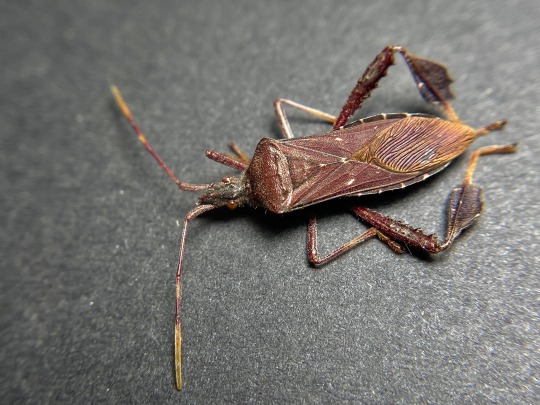
Leptoglossus oppositus (Coreidae)

Arilus cristatus (Reduviidae)
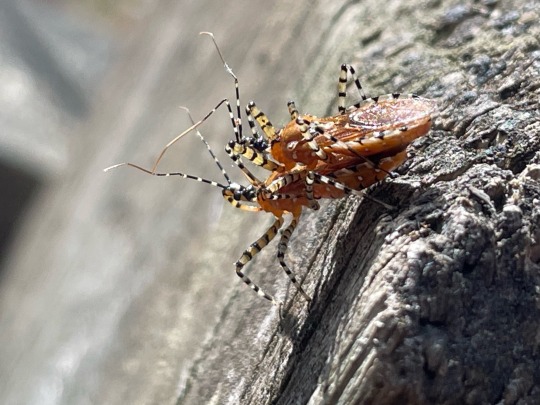
Pselliopus cinctus (Reduviidae)
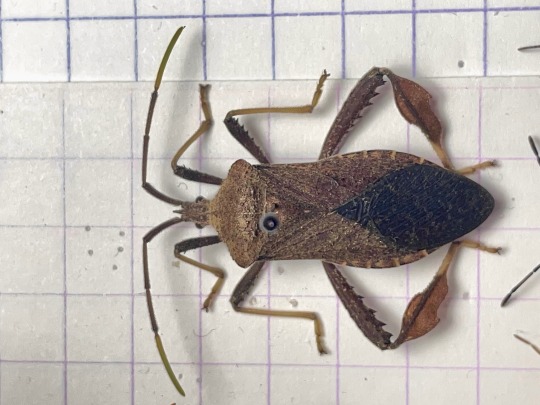
Acanthocephala terminalis (Coreidae)
62 notes
·
View notes
